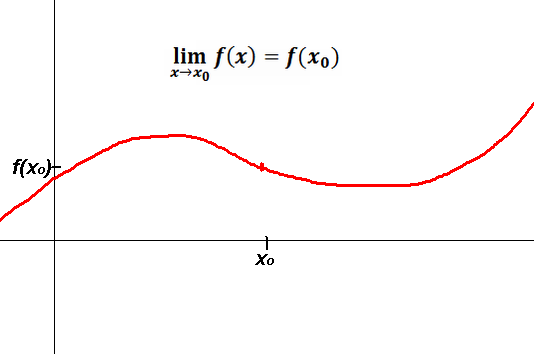
If f is not defined at x0, i.e. a "hole",
the limit as x approaches x0 is the hole:
a limit is about the "approach", not the "destination".
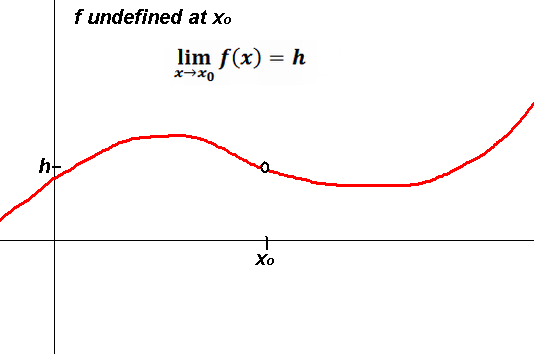
If f is defined at x0, i.e. a "hole" removable discontinuity,
(a "hiccup" function)
the limit as x approaches x0 is still the hole, i.e. with limits
it doesn't matter what happens at the approach x0:

This function does not respect its limit.
Any kind of "jump" discontinuity: no limit exists because the one-sided
limits of the lefthand and righthand are at the different endpoints at the
jump:
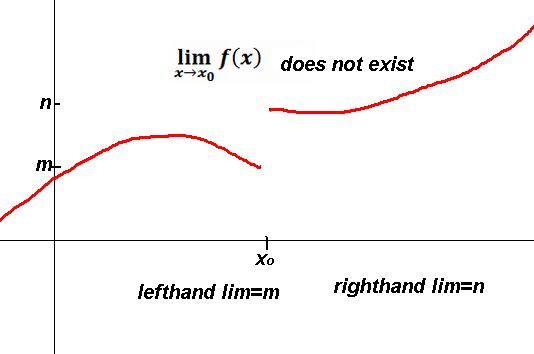
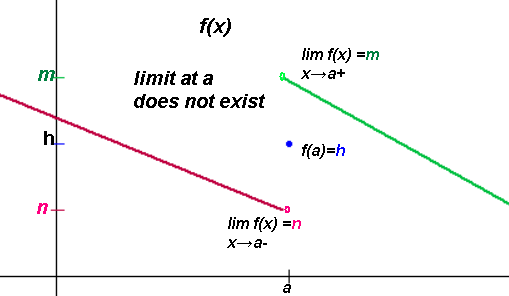
∞ isn't a number, thus can't be a limit.
At a "two-sided" vertical asymptote
can describe the function's behavior as going to ∞.
But as ∞ is not a number,
the function doesn't have a limit here. We say the limit "fails to exist".
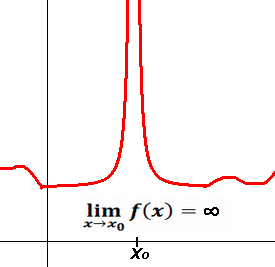
No limit at a "one-sided" vertical asymptote:
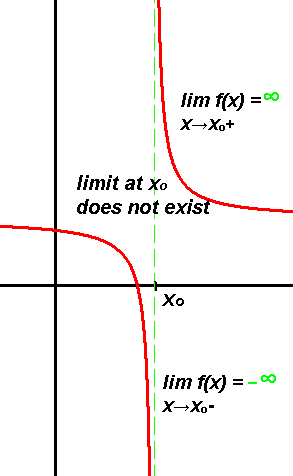
Limit as x approaches ∞, i.e. horizontal asymptote,
e.g. the one possibly of a rational function or the two of
certain non-rational functions e.g. arctan, CDF


Limit as some value approaches 0, e.g. definition of derivative:

Continuity. Can draw the function without lifing pen from paper.
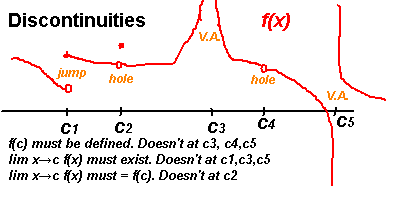
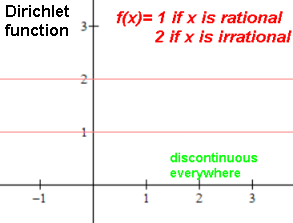
Examples:
Can work graphically, tabularly, and algebraically.
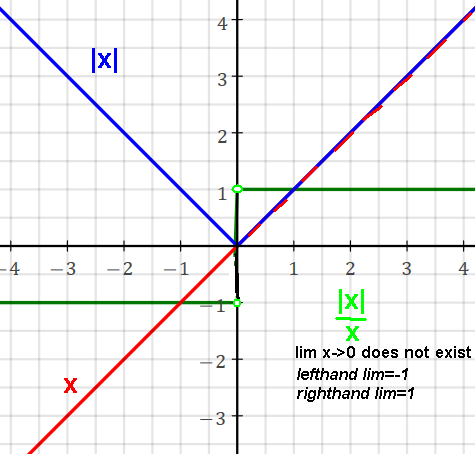
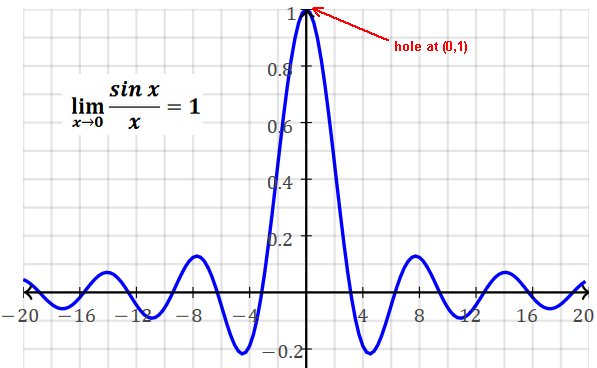
lim x→0 (1-cos x)/x = 0
lim x→0 sin 1/x does not exist